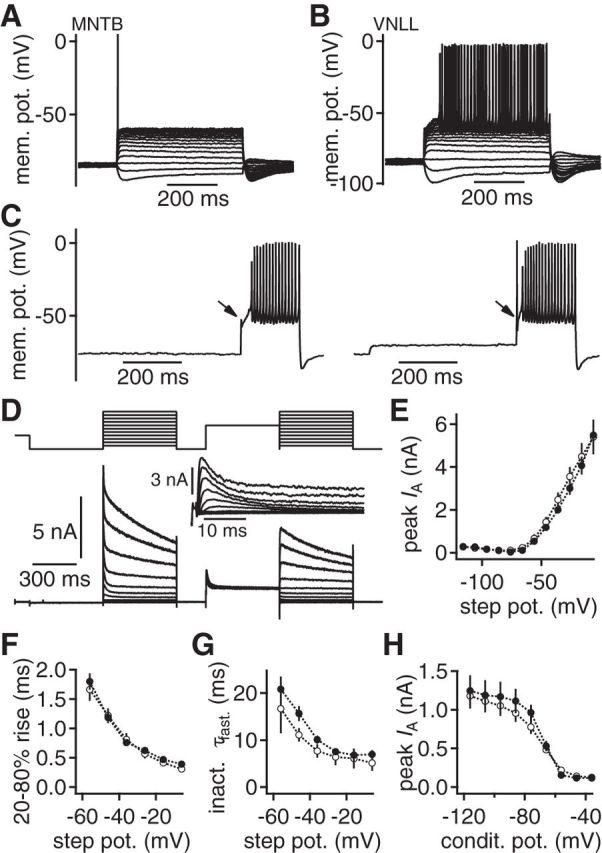Figure 7.

An inactivating postsynaptic potassium current gates information transfer. A, B, Postsynaptic voltage responses to 500 ms square current injections in neurons of the MNTB (A) and the VNLL (B). Hyperpolarizing responses appear similar. Suprathreshold injections induce different firing behaviors in MNTB and VNLL neurons. C, The lack of onset APs (left) in VNLL neurons can be reversed by subthreshold depolarizations (right). D, Postsynaptic voltage-clamp recording of a subtraction protocol used to isolate a transient potassium current (inset) in VNLL neurons. E, Peak current of the isolated transient potassium current as a function of the step potential in VNLL neurons in P9–P11 (closed symbols, n = 6) and P14/P15 (open symbols, n = 7). F, Rise time of the transient potassium current as a function of the step potential. Symbols as in E. G, Fast decay time constant (τfast) of the transient potassium current as a function of the step potential. Symbols as in E. H, Voltage-dependent inactivation of the transient potassium current as a function of the conditioning potential. Symbols as in E.
